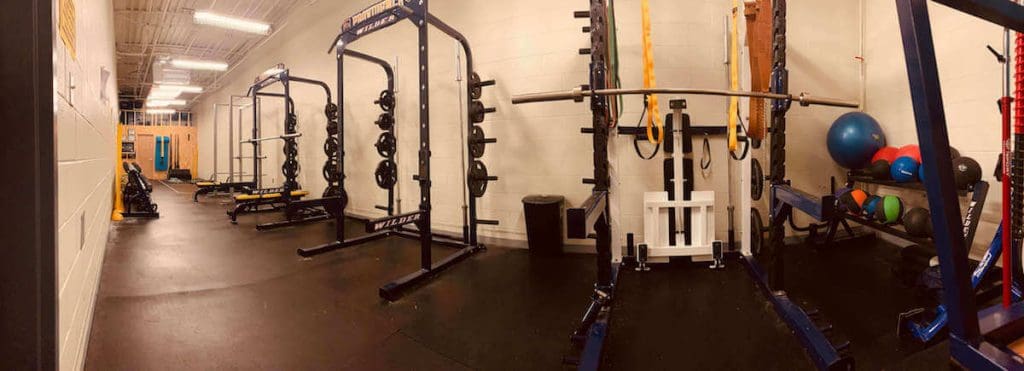Athletic Directors & Weight Rooms: Leading the Strength Training Initiative
High School Athletic Directors juggle many responsibilities. Duties range from setting schedules for every sport, arranging practice times (and hoping mother nature doesn’t wreak havoc on your plans), to dealing with the daily issues that pop up like wildfires.
Given such far ranging duties, it is no coincidence that many AD’s choose not to take an active role in directing the Strength and Conditioning of their teams. However, this leaves each coach to fend for themselves.
The result is that coaches train with a more narrow, sport specific focus, despite athletes predominantly being multi-sport participants. Worse yet, coaches may not provide any training at all, given a lack of comfortability in the weight room.
Tara James, Athletic Director and Girls Basketball Coach at Providence Christian in Tennessee, observed both of these issues happening at her school. She knew for their Athletic Department to prosper, she had to change things from the top down.
Her goal was to offer a unified approach to training amongst all sports, and boost year round participation.
A Top Down Mandate
For Tara, the first step in building a successful weight room culture was to have one coach who was solely responsible for training all athletes. For this, she turned to Mike Jones. Mike is the schools most experienced coach in the weight room, with numerous certifications, including USA Weightlifting.
With Mike leading the charge, they set out to ensure that Athlete’s had ample opportunity to get into the weight room. Mike opened the weight room before and after school and athlete’s could choose the session that fit them best. Additionally, the school offered two Strength and Conditioning Classes during the school day.
From there, Tara empowered Mike to find resources to help facilitate training for the athletes at Providence Christian. After a comprehensive search, Mike eventually purchased PLT4M, citing two primary reasons.
First, it offered introductory programs for younger athletes. Secondly, the non-sport specific approach for experienced athletes offered In-Season and Off-Season programs with the ability for Mike to easily tweak exercises as needed.
A Unified Approach
Since joining PLT4M, Mike has worked with the Middle School Teachers who now use PLT4M’s Introductory Training Progression. Starting with bodyweight movements, students develop an understanding of foundational human movements like the Air Squat. From there, they begin to utilize med balls and PVC pipes to learn new movements like the Clean.
Once at the high school level, Athletes are given access to both an “In-Season” and “Off-Season” training program. They are able to choose the program best suited for them at any given time, and by simply plugging in their maxes, PLT4M’s system personalizes the workouts for each athlete.
For Mike Jones, accountability and independence are the cornerstones of success in an approach like this. Athletes are given guidance in choosing the correct program, but must take ownership when it comes to getting to the weight room, hitting movement standards, and logging their results. The PLT4M exercise demo’s provide a great way for kids to learn movements on their own, and then use Mike for further help mastering the technique.
Return on Investment
Providence Christian’s investment in a unified approach, Coach Jones, and PLT4M, has lead to tremendous changes.
Weight room turnout has increased, and teams who seldomly used the weight room in the past are now coming in consistently.
Tara James is leading by example. Her Girls Basketball team is the most active team in the weight room, and it showed on the court this past season. Only eight years after starting the program, Tara and the Girls Basketball team clinched their first state title in 2019.
What started as a single Athletic Director’s vision has blossomed into a successful and established weight room culture that permeates all the teams at Providence Christian. Tara and Mike both believe this will have a lasting impact on the success of their programs, but more importantly, on the success of their athletes.







